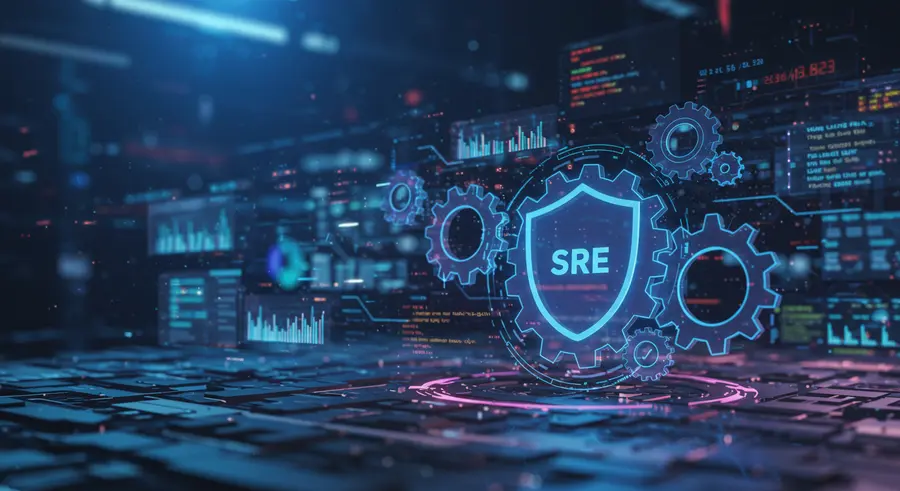Appearance

Welcome, fellow engineers and tech enthusiasts! 👋 Today, we're diving deep into the fascinating world of Site Reliability Engineering (SRE). If you're building or managing software systems, you know that reliability isn't just a feature—it's a fundamental necessity. In this article, we'll explore the core principles that underpin SRE, a discipline born at Google, and how you can apply them to build truly "bulletproof" systems.
What is Site Reliability Engineering (SRE)?
At its heart, SRE is about applying software engineering principles to operations problems. It's a blend of software development and IT operations, aiming to create highly reliable, scalable, and efficient systems. The goal is to move away from manual, reactive operations to automated, proactive engineering solutions.
You can learn more about the foundations of SRE in our catalogue: Foundations of Site Reliability Engineering.
The Core Principles of SRE
SRE is guided by several key principles that help teams achieve and maintain high levels of system reliability. Let's break them down:
1. Embracing Risk: The Error Budget
The first and perhaps most counter-intuitive principle is embracing risk. No system can be 100% reliable. Striving for perfection often leads to diminishing returns and slows down innovation. SRE acknowledges this by introducing the concept of an Error Budget.
- Service Level Objectives (SLOs): These define the desired level of service reliability. For example, an SLO might state that a service should have 99.9% availability over a month.
- Service Level Indicators (SLIs): These are the metrics used to measure the SLOs (e.g., uptime, latency, error rate).
- Error Budget: This is the allowed downtime or unreliability for a service within a given period, derived directly from the SLO. If your availability SLO is 99.9%, your error budget is 0.1% downtime.
The error budget acts as a crucial communication tool between development and operations. If the error budget is being consumed too quickly, it signals that the team needs to prioritize reliability work. If there's plenty of error budget left, it allows for more aggressive feature development and experimentation. It's a trade-off that balances innovation with reliability. ⚖️
2. Minimizing Toil Through Automation
Toil refers to manual, repetitive, automatable, tactical, and devoid of enduring value work. It's the kind of work that scales linearly with system growth and doesn't lead to long-term improvements. SRE aims to eliminate toil through automation.
- Why automate? Automation reduces human error, frees up engineers for more creative and impactful work, and ensures consistent and repeatable operations.
- Examples of toil: Manual deployment steps, repeatedly restarting failed services, manually generating reports, or hand-editing configuration files.
- SRE's goal: If a task needs to be done more than once, it should be automated. 🤖
3. Monitoring and Alerting: The Eyes and Ears of Your System
Effective monitoring and alerting are the backbone of SRE. You can't improve what you don't measure. SRE emphasizes actionable alerts that indicate when a user-facing metric is out of bounds, rather than just system-level metrics.
- What to monitor: Focus on what matters to the user: latency, traffic, errors, and saturation (resource utilization). These are often referred to as the "four golden signals."
- Alerting philosophy: Alerts should be actionable, specific, and indicate a problem that requires immediate attention. If an alert isn't actionable, it's noise. 🚨
- Post-mortems: When incidents occur, SRE teams conduct blameless post-mortems to understand the root cause, identify systemic weaknesses, and implement preventative measures. This fosters a culture of continuous learning and improvement. 📚
4. Release Engineering and Change Management
SRE promotes a disciplined approach to release engineering and change management. This involves making changes safely and predictably, minimizing the risk of outages.
- Progressive rollouts: Deploying changes gradually (e.g., canary deployments, dark launches) to a small subset of users before a full rollout. This allows for early detection of issues and quick rollbacks if problems arise.
- Automated testing: Comprehensive automated tests are essential to ensure the quality and stability of new releases.
- Rollback capabilities: The ability to quickly and safely revert to a previous stable state is crucial in case of an issue. ↩️
5. Shared Ownership and Collaboration
SRE fosters a culture of shared ownership between development and operations teams. This breaks down traditional silos and encourages a collaborative approach to building and running reliable systems.
- "You build it, you run it": While not always strictly implemented, the spirit of this principle encourages developers to consider the operational aspects of their code.
- Blameless culture: When failures occur, the focus is on learning and improving the system, not on assigning blame to individuals. This promotes psychological safety and encourages transparency. 🤝
Benefits of Adopting SRE Principles
Implementing SRE principles can bring numerous benefits to an organization:
- Increased reliability and availability: By focusing on proactive measures and continuous improvement.
- Faster innovation: Error budgets provide a clear framework for balancing reliability with the pace of development.
- Reduced operational costs: Through automation and efficiency gains.
- Improved team morale: By reducing toil and empowering engineers with better tools and processes.
- Better customer satisfaction: Ultimately, reliable services lead to happier users. 🎉
Conclusion
Site Reliability Engineering is more than just a set of practices; it's a philosophy that transforms how organizations approach system reliability. By embracing risk, automating toil, monitoring effectively, managing change carefully, and fostering collaboration, teams can build and maintain systems that are not just functional, but truly bulletproof. Start your SRE journey today and witness the transformation in your systems and your team! ✨